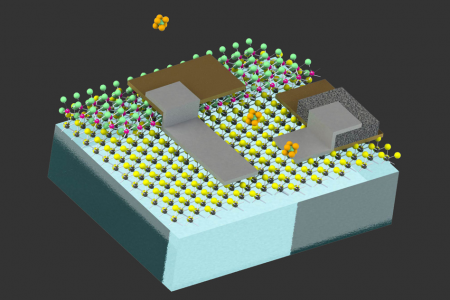August 4, 2018 – An electronic circuit so small it is no bigger than a human egg cell has been created by researchers at the Massachusetts Institute of Technology. This tiny robot can sense its environment, process the data it collects and execute tasks. The two-dimensional circuit is piggybacked on insoluble particles called colloids.
The beauty of using a robot built from an electronic circuit grafted to a colloidal particle is versatility. It can almost go anywhere through a liquid including:
- traveling through the digestive tract to detect inflammation and other disease indicators.
- analyzing the chemistry of industrial refining processes, finding potential contaminants.
- traveling through oil pipelines, detecting changes in pressure and flows that indicate leaks.
How small is this new robot? When we say it is the size of a human egg we are talking about a diameter of 0.1 millimeters, equivalent to the thickness of a coarse human hair.
The product of MIT’s Materials Research Laboratory, this robotic invention is described as the smallest ever to be developed States Michael Strano of MIT, “we wanted to figure out methods to graft complete, intact electronic circuits onto colloidal particles.” The goal was to use a robot created this way to access previously inaccessible environments. Mating the circuit with a colloid particle would do the trick.
The new robot can remain suspended indefinitely in almost any kind of liquid. It is not equipped to move by itself and requires little in the way of energy to operate. It can be powered by light and includes tiny retroreflectors making it easy to locate while traveling through different liquid media. The electronic circuit is described as two-dimensional (2D). It contains graphene and transition-metal dichalcogenides. It requires nanowatts and sub-volt voltages to power itself. for energy and is powered by light.
Volodymyr Koman, the lead author of the paper published July 23, 2018, in the journal Nature Nanotechnology, that describes this new robot, states that the need to combine the circuit with a colloid was critical to the 2D electronics survival. The circuit could not exist on its own because it is too fragile but when combined with a colloidal particle to reinforce its integrity, it can tolerate any of the physical fluid environments for which it was intended.
















